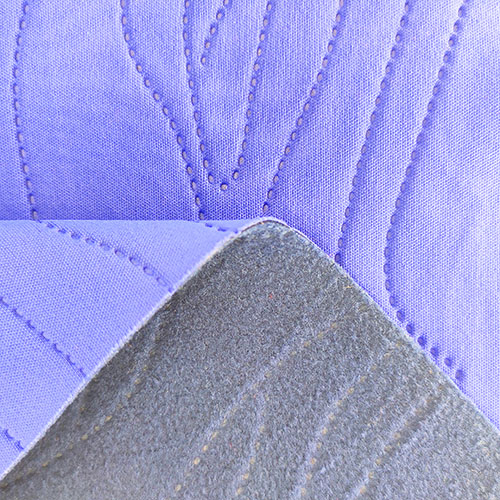Hidden horizontal strips refer to the phenomenon that the size of the coil changes periodically and the cloth surface is sparse and uneven during a cycle of machine operation. Generally speaking, the raw material is less likely to cause hidden horizontal bars, and most of them are periodic tension unevenness caused by untimely adjustment after mechanical wear, which results in hidden horizontal bars.
The reason
1. Due to poor installation accuracy, or serious wear due to aging of the equipment, the level and concentricity deviation of the circular knitting machine needle cylinder exceeds the allowable tolerance. A common problem is that the gap between the positioning pin of the large transmission gear plate and the positioning groove of the machine frame is too large, which causes the needle cylinder to be not stable enough in operation, which seriously affects the yarn feeding and unwinding. In addition, due to equipment aging and mechanical wear, the longitudinal and radial shaking of the main transmission gear plate increases the concentricity of the needle cylinder and the deviation, which causes the fluctuation of the yarn feeding tension, causes the coil size to be abnormal, and in serious cases, hidden horizontal stripes appear on the fabric
2. In the production process, the speed change disc of the yarn feeding mechanism is embedded with foreign objects such as flying flowers in the adjustment slider, so that the roundness is affected, the speed of the synchronous toothed belt is abnormal, and the amount of yarn is unstable, which leads to the production of hidden horizontal stripes. .
3. The circular knitting machine adopts a passive yarn feeding mechanism, which is difficult to overcome the shortcomings of the large difference in yarn tension during the yarn feeding process, and it is easy to cause unexpected yarn elongation and the difference in the amount of yarn to form a hidden horizontal strip.
4. The circular knitting machine adopts intermittent coiling mechanism, the tension fluctuates greatly during the coiling process, and the length of the coil is easy to produce differences.

Preventive rectification measures
1. Properly thicken the positioning surface of the gear plate to control the shaking of the gear plate between 1 and 2 wires. Polish and polish the bottom ball track, add grease to flatten the bottom of the needle cylinder with a soft and thin elastic body, and strictly control the radial sway of the needle cylinder at about 2 threads. The sinker triangle needs to be calibrated regularly, so that the distance between the sinker triangle and the new sinker tail is controlled between 30 and 50 wires, and the deviation of the triangle position of each sinker should be controlled within the range of 5 wires as much as possible to make the sinker retreat Keep the yarn holding tension consistent when looping.
2. Control the temperature and humidity of the workshop. Generally, the temperature is controlled at about 25°C and the relative humidity is controlled at 75% to prevent the phenomenon of attracting flying dust caused by static electricity. At the same time, necessary dust collection measures are taken to keep clean and hygienic, strengthen machine maintenance, and ensure the operation of various rotating parts. Normal.
3. Transform the passive mechanism into a sequential active yarn feeding mechanism to reduce the tension difference in the yarn guiding process. It is best to install a speed monitoring device to stabilize the yarn feeding tension.
4. Transform the intermittent winding mechanism into a continuous winding mechanism to ensure the continuity of the fabric curling process and ensure the stability and uniformity of the roll tension.


